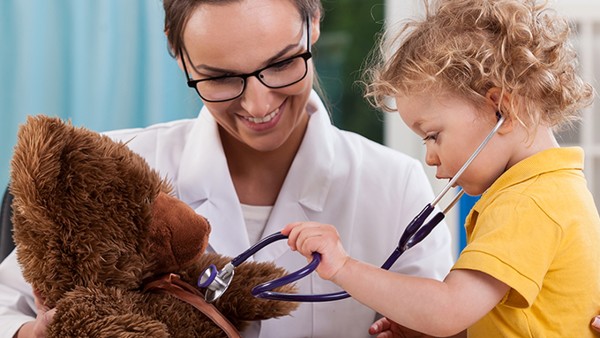What to Pay Attention to in Children with Allergic Rhinitis

Introduction
Allergic rhinitis, commonly known as hay fever, is a common inflammatory condition of the nasal passages caused by an allergic reaction to certain allergens. In children, allergic rhinitis can significantly impact their daily lives, causing a range of symptoms that can affect their sleep, school performance, and overall well-being. Understanding the signs and symptoms of allergic rhinitis in children is crucial for early diagnosis and proper management.
Symptoms of Allergic Rhinitis in Children
The symptoms of allergic rhinitis in children can vary in severity and can include:
Runny nose: A clear, watery discharge from the nose is a hallmark symptom of allergic rhinitis. The discharge may become thicker and colored as the condition progresses.
Sneezing: Frequent and forceful sneezing is another common symptom of allergic rhinitis, often triggered by exposure to allergens.
Itchy nose: Children with allergic rhinitis often experience an intense itching sensation in their nose, leading to frequent nose rubbing or picking.
Stuffy nose: Allergic rhinitis can cause nasal congestion, making it difficult for children to breathe through their nose.
Cough: Allergic rhinitis can trigger a persistent cough, especially at night or upon waking up in the morning.
Watery eyes: Allergic rhinitis can cause the eyes to become red, itchy, and watery.
Dark circles under the eyes: Allergic shiners, characterized by dark circles under the eyes, can be a result of chronic nasal congestion.
Fatigue: Allergic rhinitis can disrupt sleep due to nasal congestion and other symptoms, leading to fatigue and irritability during the day.
Common Allergens in Children
In children, the most common allergens that trigger allergic rhinitis include:
Pollen: Pollen from trees, grasses, and weeds is a major allergen during spring and summer.
Dust mites: Microscopic creatures that live in dust and bedding can trigger allergic reactions year-round.
Pet dander: Proteins found in the skin, saliva, and urine of pets can cause allergic rhinitis in children who are allergic to animals.
Mold: Mold spores, which grow in damp environments, can be a significant trigger for children with mold allergies.
Cockroaches: Cockroach droppings and body parts can trigger allergic reactions, especially in urban environments.
Impact of Allergic Rhinitis on Children
Allergic rhinitis can have a significant impact on children's lives, affecting their:
Sleep: Nasal congestion and other symptoms can disrupt sleep, leading to daytime fatigue and impaired cognitive function.
School performance: Allergic rhinitis can reduce children's ability to concentrate and focus in school, affecting their academic performance.
Social activities: Symptoms such as a runny nose and sneezing can make children self-conscious and reluctant to participate in social activities.
Overall well-being: Chronic allergic rhinitis can lead to irritability, mood swings, and decreased quality of life.
Diagnosis of Allergic Rhinitis
Diagnosing allergic rhinitis in children involves a thorough medical history review and a physical examination. The doctor may also perform allergy testing to identify the specific allergens that are triggering the symptoms. Allergy testing can be done through skin prick tests or blood tests.
Treatment of Allergic Rhinitis
The treatment of allergic rhinitis in children focuses on controlling symptoms and reducing exposure to allergens. Treatment options may include:
Medications: Antihistamines and nasal corticosteroids are commonly used to reduce symptoms such as sneezing, runny nose, and nasal congestion.
Allergen avoidance: Identifying and avoiding allergens is crucial for managing allergic rhinitis. This may involve using dust mite covers, keeping pets out of the bedroom, and limiting exposure to mold.
Immunotherapy: Allergy shots or sublingual immunotherapy can help desensitize children to specific allergens over time.
Preventing Allergic Rhinitis in Children
While not always possible, there are certain measures that can be taken to reduce the risk of developing allergic rhinitis in children:
Early exposure to allergens: Studies have shown that early exposure to common allergens, such as pets and dust mites, can help build tolerance and reduce the risk of developing allergies.
Breastfeeding: Breastfeeding has been linked to a lower risk of developing allergic diseases, including allergic rhinitis.
Vitamin D: Ensuring adequate vitamin D intake has been associated with a reduced risk of allergic rhinitis.
Avoiding secondhand smoke: Exposure to secondhand smoke is a significant risk factor for developing allergic rhinitis and other allergic diseases.
When to Seek Medical Attention
If your child experiences persistent symptoms suggestive of allergic rhinitis, it is important to seek medical attention. Prompt diagnosis and treatment can help prevent complications and improve overall well-being. Red flags that warrant immediate medical attention include difficulty breathing, wheezing, or a high fever.
Conclusion
Allergic rhinitis is a common condition in children that can significantly impact their daily lives. Understanding the signs, triggers, and treatment options for allergic rhinitis is crucial for effective management and to minimize its impact on children's health and well-being. Early diagnosis and adherence to the recommended treatment plan can help children with allergic rhinitis live full and active lives.
The above is all the content that the editor wants to share with you. I sincerely hope that these contents can bring some help to your life and health, and I also wish that your life will be happier and happier.
Tags: #pay #attention #what














